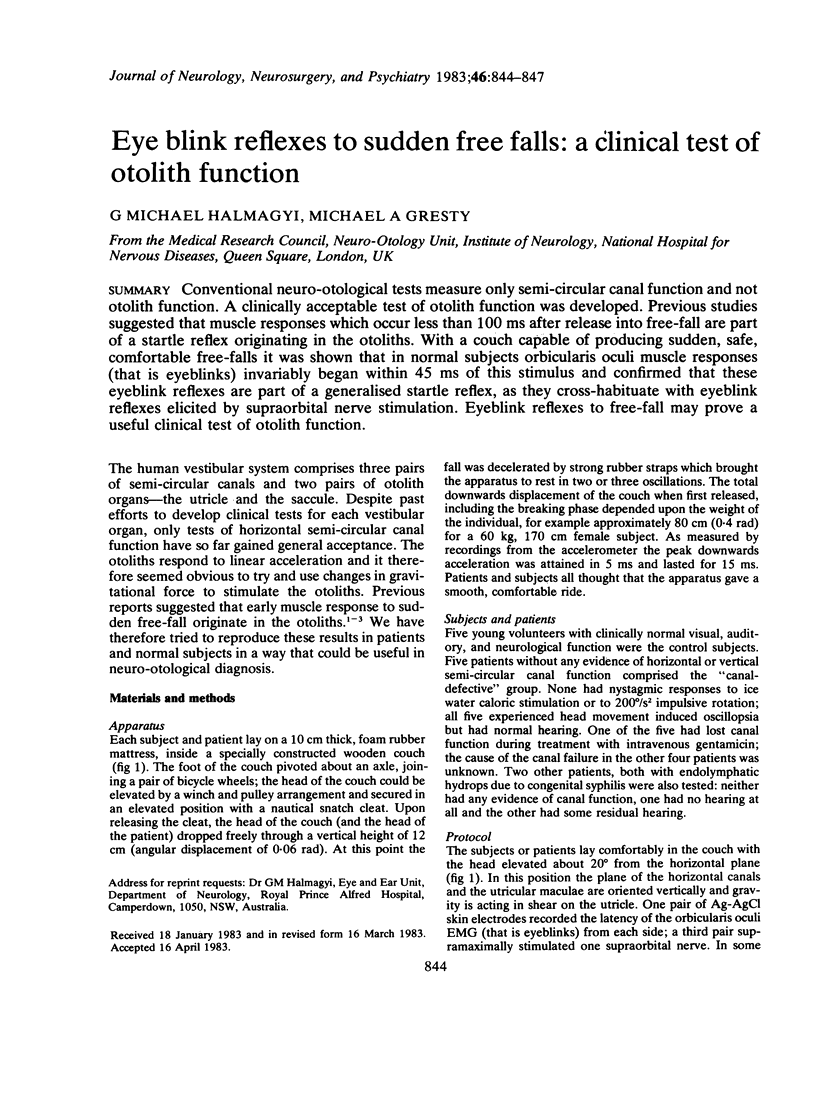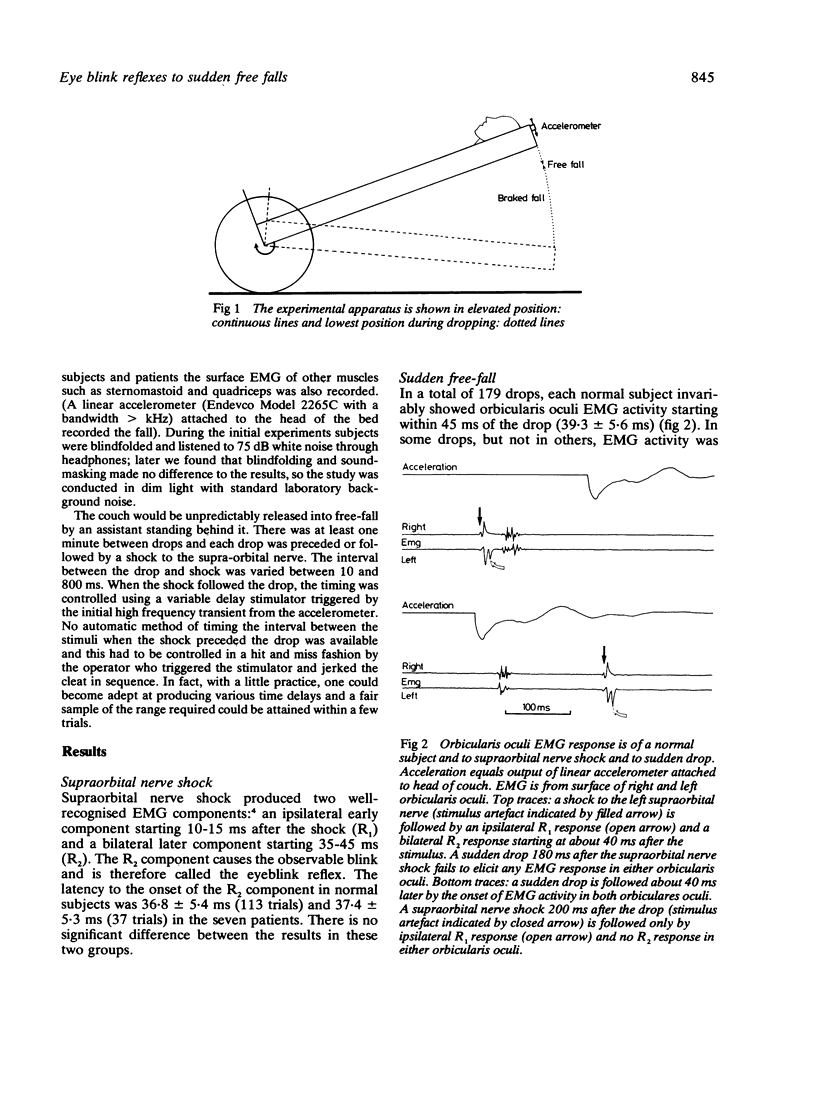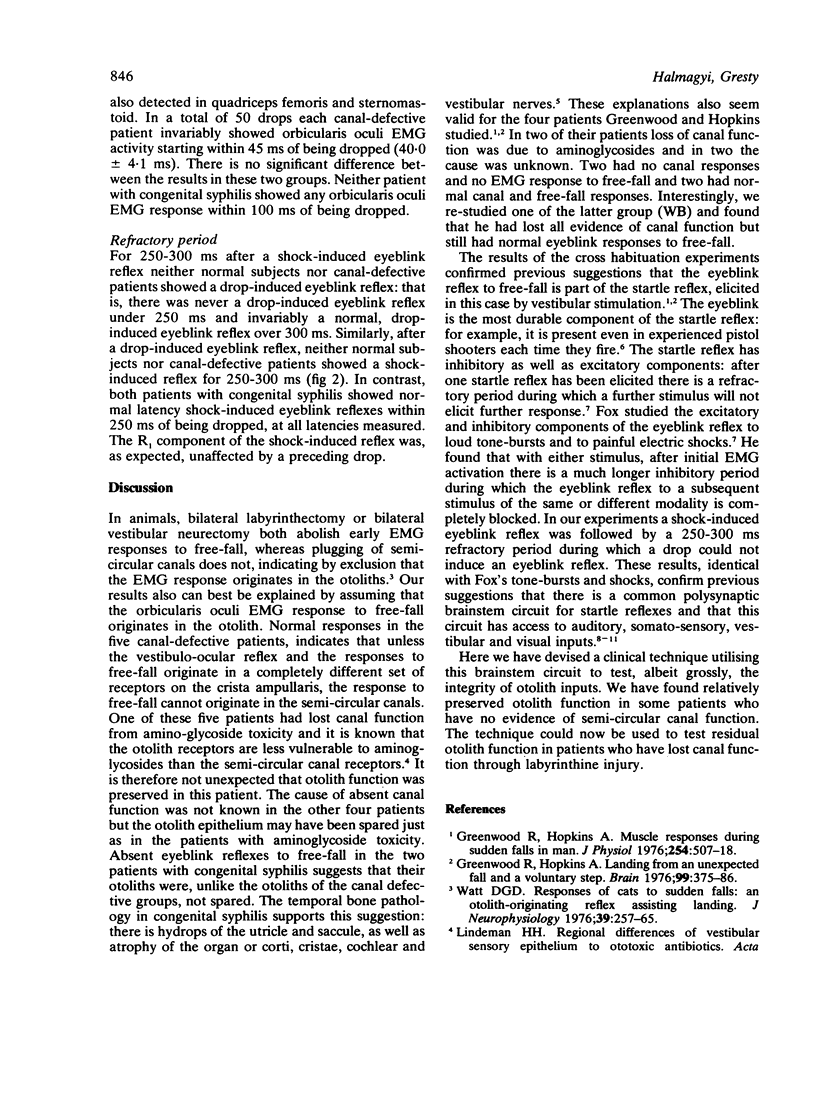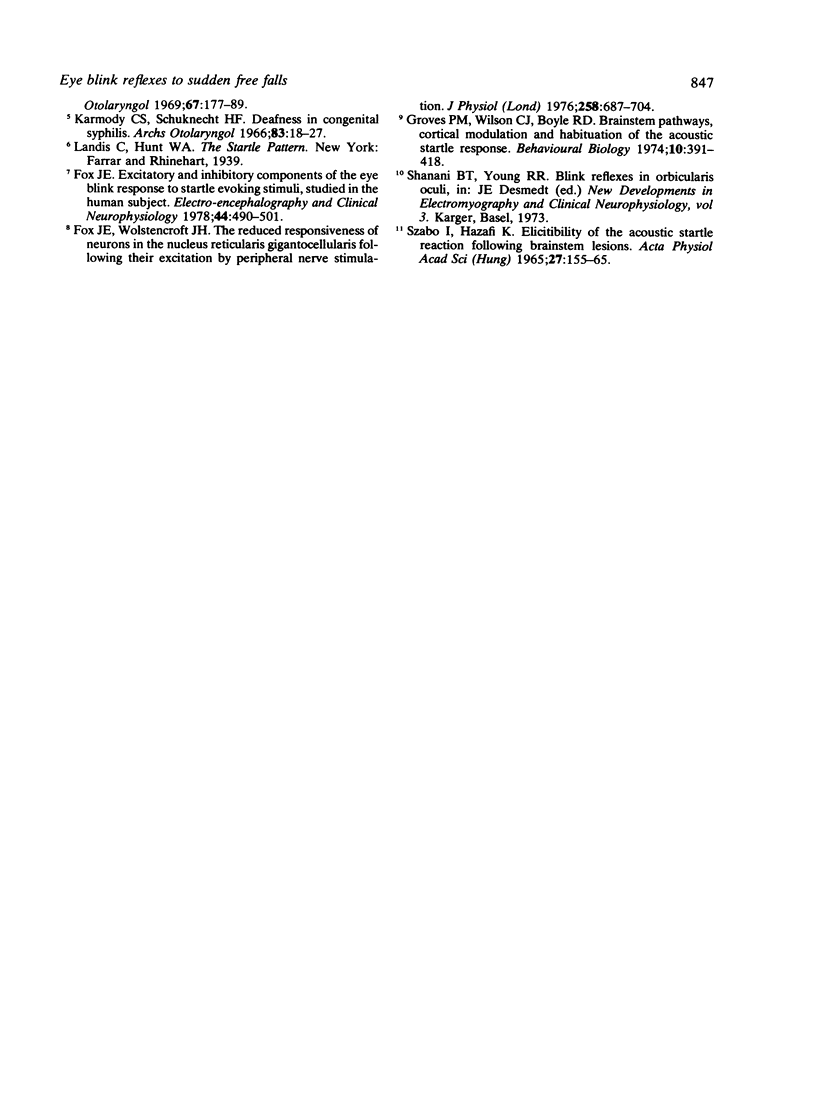Abstract
Conventional neuro-otological tests measure only semi-circular canal function and not otolith function. A clinically acceptable test of otolith function was developed. Previous studies suggested that muscle responses which occur less than 100 ms after release into free-fall are part of a startle reflex originating in the otoliths. With a couch capable of producing sudden, safe, comfortable free-falls it was shown that in normal subjects orbicularis oculi muscle responses (that is eyeblinks) invariably began within 45 ms of this stimulus and confirmed that these eyeblink reflexes are part of a generalised startle reflex, as they cross-habituate with eyeblink reflexes elicited by supraorbital nerve stimulation. Eyeblink reflexes to free-fall may prove a useful clinical test of otolith function.
Full text
PDF



Selected References
These references are in PubMed. This may not be the complete list of references from this article.
- Fox J. E. Excitatory and inhibitory components of the eyeblink responses to startle evoking stimuli, studied in the human subject. Electroencephalogr Clin Neurophysiol. 1978 Apr;44(4):490–501. doi: 10.1016/0013-4694(78)90033-0. [DOI] [PubMed] [Google Scholar]
- Fox J. E., Wolstencroft J. H. The reduced responsiveness of neurones in nucleus reticularis gigantocellularis following their excitation by peripheral nerve stimulation. J Physiol. 1976 Jul;258(3):687–704. doi: 10.1113/jphysiol.1976.sp011441. [DOI] [PMC free article] [PubMed] [Google Scholar]
- Greenwood R., Hopkins A. Landing from an unexpected fall and a voluntary step. Brain. 1976 Jun;99(2):375–386. doi: 10.1093/brain/99.2.375. [DOI] [PubMed] [Google Scholar]
- Greenwood R., Hopkins A. Muscle responses during sudden falls in man. J Physiol. 1976 Jan;254(2):507–518. doi: 10.1113/jphysiol.1976.sp011242. [DOI] [PMC free article] [PubMed] [Google Scholar]
- Groves P. M., Wilson C. J., Boyle R. D. Brain stem pathways, cortical modulation, and habituation of the acoustic startle response. Behav Biol. 1974 Apr;10(4):391–418. doi: 10.1016/s0091-6773(74)91975-0. [DOI] [PubMed] [Google Scholar]
- Karmody C. S., Schuknecht H. F. Deafness in congenital syphilis. Arch Otolaryngol. 1966 Jan;83(1):18–27. doi: 10.1001/archotol.1966.00760020020008. [DOI] [PubMed] [Google Scholar]
- Watt D. G. Responses of cats to sudden falls: an otolith-originating reflex assisting landing. J Neurophysiol. 1976 Mar;39(2):257–265. doi: 10.1152/jn.1976.39.2.257. [DOI] [PubMed] [Google Scholar]


